CFL Bulbs: An overview
Compact fluorescent bulbs—usually referred to by the initials “CFL”— have come a long way. Early versions were expensive (as much as $15 apiece) and plagued with problems (they appeared dim, flickered, didn’t come on instantly and burned out sooner than promised).
But that was then. New technology has solved most of the old problems. Today, using CFLs is one of the easiest and most effective ways to save money on energy. It’s as easy as screwing in a bulb and flipping a switch. Many CFLs can be purchased for about $3 or less, and some utility companies offer discounts or rebates to customers who buy them.
That said, buying and using CFLs can still be confusing. The answers to these common questions will help you put these great energy-saving bulbs to best use.
How to choose CFL bulbs
Answer: Look at the lumen rating, not the bulb wattage, to compare real light output. Then buy a CFL with 20 percent more lumens than the incandescent bulb you want to replace has. For example, to replace a 60-watt incandescent bulb that has 870 lumens, buy a CFL with at least 1,050 lumens. If you follow wattage guidelines on the package, you may not be satisfied with the light output. Be wary of CFLs that don’t list the lumens on the packaging. Their claims that the light output matches a certain incandescent wattage are sometimes misleading or wrong.
Another reason you need more lumens is that a CFL will dim over time. It will lose 20 to 25 percent lumen power after 4,000 hours (40 percent of a CFL’s 10,000-hour-rated life). Incandescent bulbs also lose lumens, but the life of these bulbs is extremely short compared with that of CFLs.
Best (and worst) places to use CFL Bulbs
Question: Are there some places where using a CFL makes more sense than others?
Answer: Since many CFLs last up to 10 times as long as incandescents, consider placing CFLs in difficult-to- reach fixtures. It may mean climbing the ladder once every five years instead of every year. It also makes sense to use CFLs in light fixtures that are continuously “On” more than three hours per day.
CFLs save energy in any location, but there are some circumstances that can reduce their lifespan:
- Frequent on-off switching, as in a hallway.
- Excessive vibration near doors or stairways.
- High-humidity areas such as a damp basement.
- A CFL that’s not rated for use in an enclosed light fixture might burn out prematurely if enclosed.
Payback: How long? How come?
Answer: Although CFLs have come down dramatically in price, their electronic ballast and other features do make them more expensive to manufacture than incandescent bulbs. The payback period will vary with the cost of electricity in your area. However, based on a cost of 10¢ per kWh, a 15-watt CFL will cost about $12 to operate over its 8,000-hour projected lifespan. Burning a 60-watt incandescent bulb with equivalent light output for the same length of time will cost about $48; a cost difference of $36 (and you’ll need to buy four to eight bulbs since they have a much shorter lifespan). Based on those numbers, a CFL will pay for itself in about 500 hours (in about four months if the bulb is used four hours per day).
Lights Out
There is a small power surge and a small spike in electrical usage when most lights are turned on, but as a rule of thumb, you’ll save money by turning off lights that will remain off for more than five minutes.
CFLs vs. incandescent bulbs
Answer: Standard incandescent bulbs work by using electricity to heat up a thin filament inside the bulb. As the filament heats up, it glows, producing light. The drawback to standard bulbs is that most of the energy consumed—over 80 percent—goes into creating heat, not light.
CFLs work on a totally different principle. They consist of two basic parts: a gas-filled tube (what many of us would call the “bulb”) and a ballast that contains the electronics. In simple terms, electricity from the ballast excites phosphors on the inside surface of the bulb; these phosphors in turn glow, producing light. Since CFLs don’t waste as much energy creating heat, they’re much more energy efficient. You see the savings when you compare the wattages; a 15-watt CFL provides about as much light as a 60-watt incandescent bulb.
What a Watt Costs
The cost of electricity in the United States ranges from less than 10¢ per kilowatt hour to nearly 40¢ per kilowatt hour. The more expensive your electricity, the faster you’ll recoup the extra money you pay for CFLs.
The ‘quality of light’ factor
Answer: Because CFLs last so long, some of the first-generation bulbs are still burning and giving people the wrong impression of the newer CFLs.
The newer bulbs flicker less, make less noise, start up faster and emit light very similar to that of standard (“Type A”) incandescent bulbs. The spiral shape, which is often used in CFLs, casts light more like a standard incandescent bulb. The color of the light has improved dramatically. If you couldn’t see the bulb, you wouldn’t know whether the light was incandescent or fluorescent. “Daylight” bulbs, which broadcast a whiter light, are available for those desiring a cooler, less yellowish light.
Dim the lights
Answer: Yes—but only if you buy the right ones. Look for CFLs that are labeled “dimmable” on the package; they have special ballasts that allow them to be operated using a standard incandescent dimmer switch. Expect to pay more for a dimmable CFL bulbs than for a regular CFL.
Outside in the cold
Answer: Yes, they’re great energy savers outdoors, but beware. Older fluorescent lights—both compact and tubular—are powered using magnetic ballasts. The lower the temperature, the more difficult it is for these bulbs to “get up to speed” and operate evenly. However, most CFLs made today have electronic ballasts that are much less sensitive to the cold.
If you’re planning to use a CFL in an area exposed to the elements, purchase one designated for “exterior” or “outside” use. These usually have an extra translucent shell surrounding the fluorescent bulb for additional protection. Specialty bulbs like the “bug light” shown and exterior floodlights are also available.
New CFLs on the block
Answer: The pin-type fluorescent bulb familiar to most of us is the classic circular kitchen bulb. These aren’t considered true CFLs since the ballast is in the fixture, not built into the bulb itself.
But there is a new generation of pin-type bulbs, like the bulb shown at the top of the photo. These are true CFLs, but they have a base designed to fit only into fixtures made specifically for these pin-type bulbs. Another unique feature of these bulbs is that the ballasts and tubes are separate. One of the reasons behind this modular design is that a typical ballast can last 30,000 hours, while a typical CFL bulb lasts 10,000. Because the parts are independent, you only need to change the bulb part that fails. These bulbs also meet the strict energy code in California.
CFLs Reduce Cooling Costs, Too
Since CFLs generate less heat than standard incandescent bulbs, your air conditioner won’t have to work quite as hard in the summer.
Three-way bulbs
Answer: Yes, three-way CFLs are available, and no, you usually don’t need a special lamp. The three-way bulbs that ramp up to the equivalent of a 150-watt incandescent can be either circular or spiral. Both shapes are quite large. For bulbs in that range, check to be sure they’ll fit the harp and shade of your lamp.
Also make certain your three-way bulb is screwed in snugly. Unless the contacts on the bottom of the bulb make solid contact, your three-way bulb may work like a single-output bulb.
Plugging Electrical Leaks
Even when your appliances and electrical equipment are turned “Off,” the truth is, they’re still “On.” One-fifth of the energy used by televisions, stereo equipment, computers and even answering machines is consumed while they’re in standby mode. One solution to the leaking electricity problem is to physically unplug appliances or turn them off via a power strip when they’re not in use.
Required Materials for this Project
Avoid last-minute shopping trips by having all your materials ready ahead of time. Here’s a list.
- CFLs
Article source here: CFL Bulbs: Here’s What You Need to Know


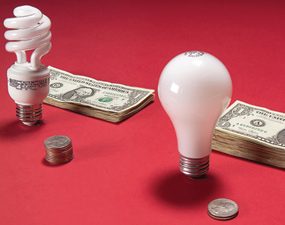
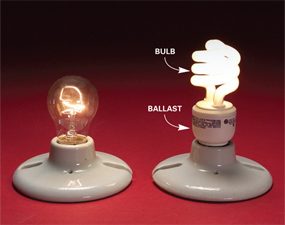
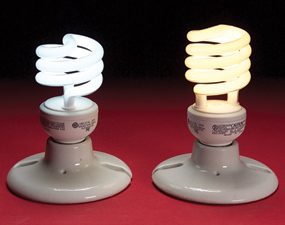
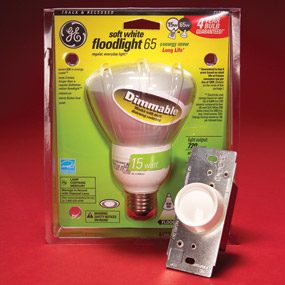

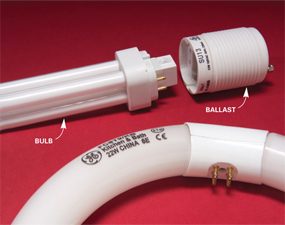
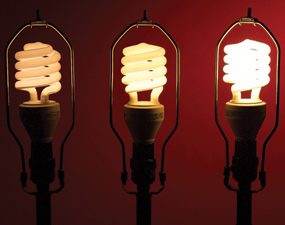

No comments:
Post a Comment